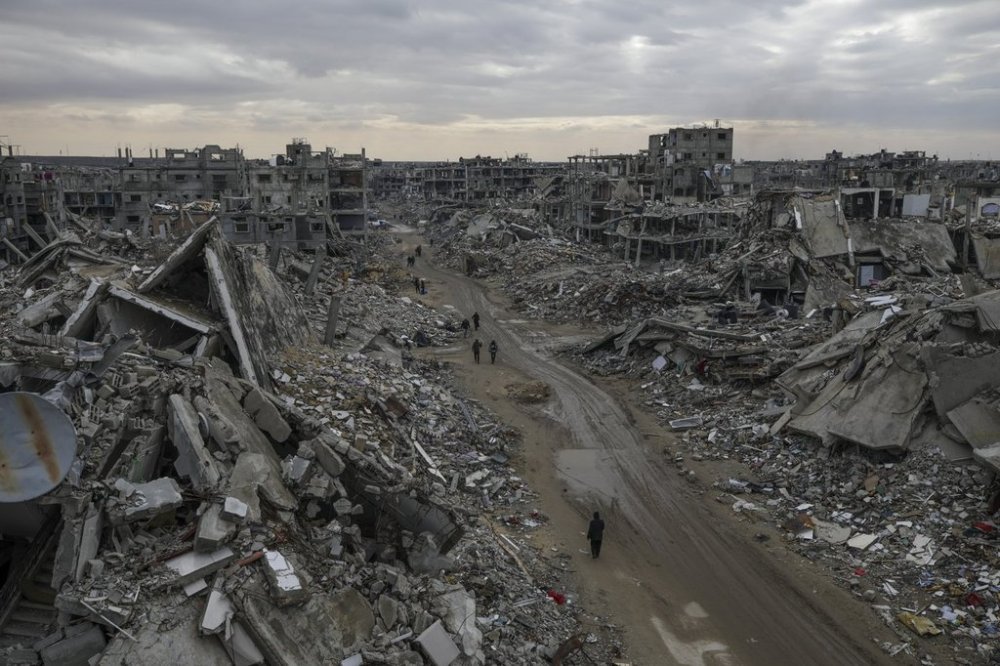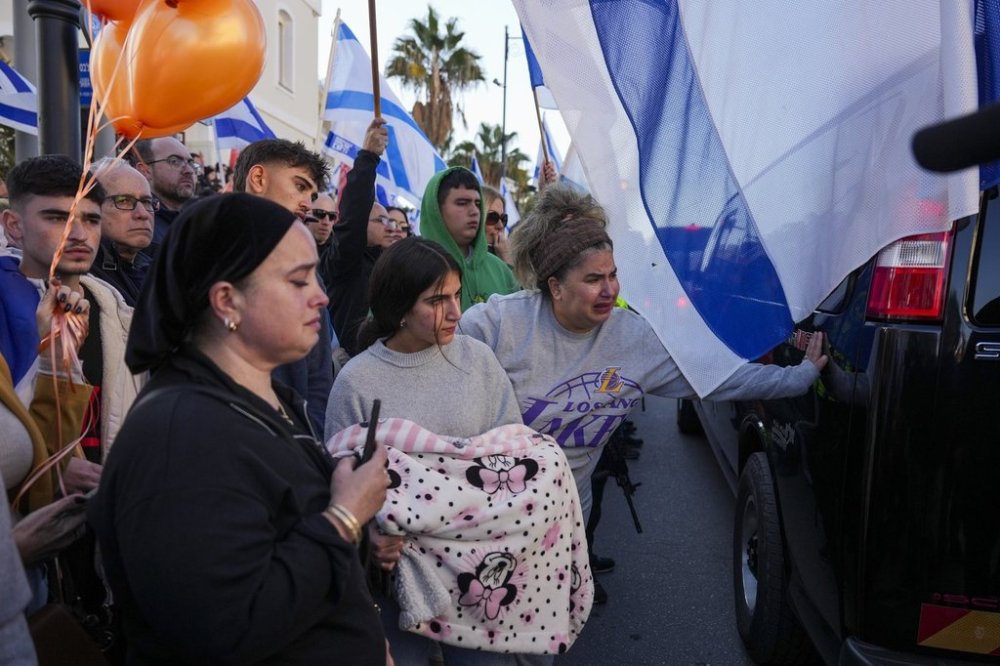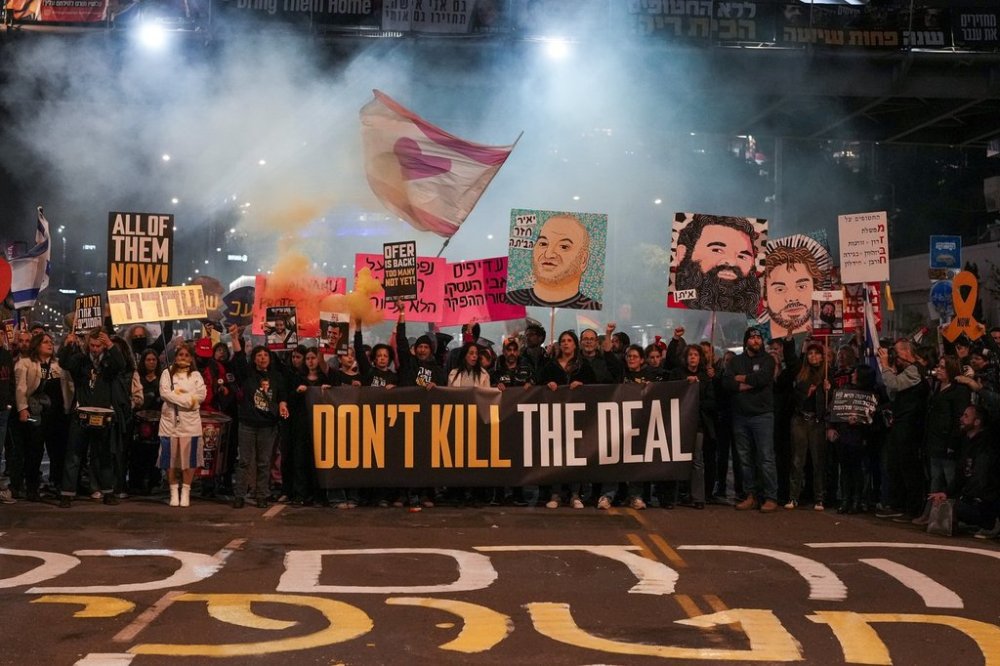Getting the Israel-Hamas ceasefire to the next phase will be difficult. Here’s why
Advertisement
Read this article for free:
or
Already have an account? Log in here »
To continue reading, please subscribe:
Monthly Digital Subscription
$0 for the first 4 weeks*
- Enjoy unlimited reading on winnipegfreepress.com
- Read the E-Edition, our digital replica newspaper
- Access News Break, our award-winning app
- Play interactive puzzles
*No charge for 4 weeks then price increases to the regular rate of $19.00 plus GST every four weeks. Offer available to new and qualified returning subscribers only. Cancel any time.
Monthly Digital Subscription
$4.75/week*
- Enjoy unlimited reading on winnipegfreepress.com
- Read the E-Edition, our digital replica newspaper
- Access News Break, our award-winning app
- Play interactive puzzles
*Billed as $19 plus GST every four weeks. Cancel any time.
To continue reading, please subscribe:
Add Free Press access to your Brandon Sun subscription for only an additional
$1 for the first 4 weeks*
*Your next subscription payment will increase by $1.00 and you will be charged $16.99 plus GST for four weeks. After four weeks, your payment will increase to $23.99 plus GST every four weeks.
Read unlimited articles for free today:
or
Already have an account? Log in here »
Hey there, time traveller!
This article was published 24/02/2025 (285 days ago), so information in it may no longer be current.
Israel and Hamas have begun working to advance their ceasefire agreement in Gaza to the next phase, but it’s unclear if they’ll get there and, if not, what comes next.
The first phase of the ceasefire, which paused 15 months of war, freed Israeli hostages and Palestinian prisoners, and enabled more humanitarian aid to reach Gaza, expires on Saturday. The two sides seem willing to maintain their truce while negotiators from the U.S., Egypt and Qatar guide talks aimed at getting to the next phase.
The parties were supposed to have begun ironing out the details of phase two weeks ago. But talks were delayed as the first six weeks of the ceasefire were marred by disputes between Israel and Hamas over alleged violations of the deal.

Under the terms of the truce that began in Jan. 19, the second phase would compel Hamas to release all the remaining living hostages from its Oct. 7, 2023, attack that triggered the war, in exchange for more Palestinian prisoners in Israel, a lasting ceasefire and a full Israeli withdrawal from the Gaza Strip.
Over the past six weeks, Hamas has freed 33 living and dead hostages in exchange for more than 1,700 Palestinian prisoners. The militant group still holds 59 captives, 32 of whom are believed to be dead.
Israel is reportedly seeking an extension of the first phase to secure the freedom of more captives.
Getting to the ceasefire’s next phase will be challenging
Getting to the second phase will be difficult because it will likely force Israel to choose between its two main war goals — the safe return of the hostages and the annihilation of Hamas.
Already, there are signs of strain. The agreement calls for Israel to begin withdrawing troops from a narrow strip of land in southern Gaza this weekend and to complete the process within eight days. But an Israeli official said Thursday that Israeli forces would remain in the Philadelphi corridor indefinitely.
One possibility is that instead of moving to phase two, Israel will try to extend phase one and push for more exchanges of hostages for prisoners. Steve Witkoff, the Trump administration’s Mideast envoy, said in an interview with CNN’s “State of the Union” on Sunday that he hoped to negotiate the second phase during an elongated first phase.
Israeli Prime Minister Benjamin Netanyahu has not publicly supported that idea. He is under pressure from hard-liners in his governing coalition to resume the war against Hamas. But he also faces pressure from the Israeli public to bring the remaining hostages home.
Witkoff said Netanyahu is committed to bringing back all the hostages but has set a “red line” that Hamas cannot be involved in governing Gaza after the war. Netanyahu has also ruled out any role in Gaza for the Western-backed Palestinian Authority, dominated by Hamas’ main rival, Fatah.
Hamas has said it is willing to hand over control of Gaza to other Palestinians, but it has dismissed Israel’s suggestion that its leadership go into exile.

That means the militant group, which does not accept Israel’s existence, would remain entrenched in Gaza. And it says it won’t lay down its arms unless Israel ends its occupation of the West Bank, Gaza and east Jerusalem —- lands captured by Israel in the 1967 Mideast war that Palestinians want for a future state.
The ceasefire’s first phase has further embittered both sides
The first phase of the ceasefire has only deepened the mistrust on both sides.
Israelis were shocked to see the captives — some of whom were emaciated — paraded before crowds upon their release. After returning to Israel, hostages said they were held under harsh conditions.
Last Thursday, Hamas handed over coffins it said held the remains of Shiri Bibas and her two small children, who it said were killed in an Israeli airstrike. But Israel said a forensic investigation showed the two children were killed by their captors, and that the third body was a Palestinian woman. Hamas later released another body that was confirmed to be the mother.
On Saturday, Hamas further infuriated Israel by filming two hostages who were forced to watch the release of others. In the footage Hamas released, the hostages turn to a camera and beg to be released. Israel then delayed the release of hundreds of prisoners.
Hamas has accused Israel of violating the ceasefire by killing dozens of people who the army said had approached its forces or entered unauthorized areas. It also accused Israel of dragging its feet on the entry of mobile homes and equipment for clearing rubble, which entered late last week, and of beating and abusing Palestinian prisoners prior to their release.
Mixed signals from Trump
President Donald Trump took credit for the ceasefire, which Witkoff helped push across the finish line after a year of negotiations led by the Biden administration, Egypt and Qatar.

But Trump has since sent mixed signals about the deal.
Earlier this month, he set a firm deadline for Hamas to release all the hostages, warning that “all hell is going to break out” if the militants didn’t. But he said it was ultimately up to Israel, and the deadline came and went.
Trump sowed further confusion by proposing that Gaza’s population of some 2 million Palestinians be relocated to other countries and for the United States to take over the territory and develop it. Netanyahu welcomed the idea, which was universally rejected by Palestinians and Arab countries, including close U.S. allies. Human rights groups said it could violate international law.
Trump stood by the plan in a Fox News interview over the weekend but said he’s “not forcing it.”
___
Follow AP’s war coverage at https://apnews.com/hub/israel-hamas-war
The Free Press acknowledges the financial support it receives from members of the city’s faith community, which makes our coverage of religion possible.



